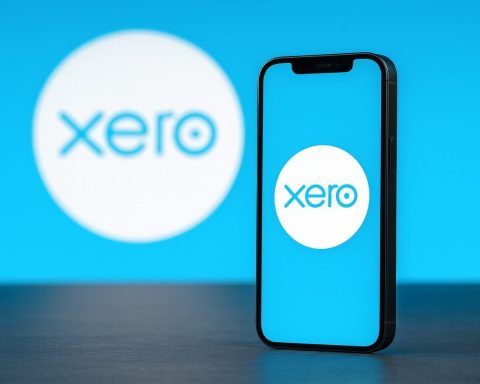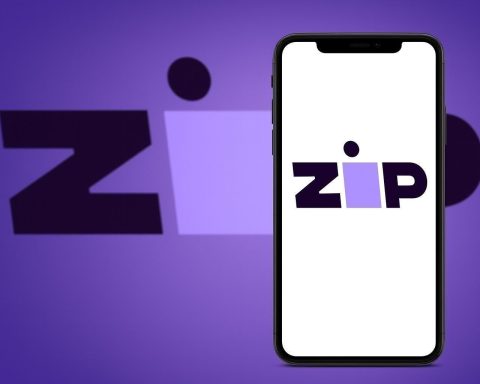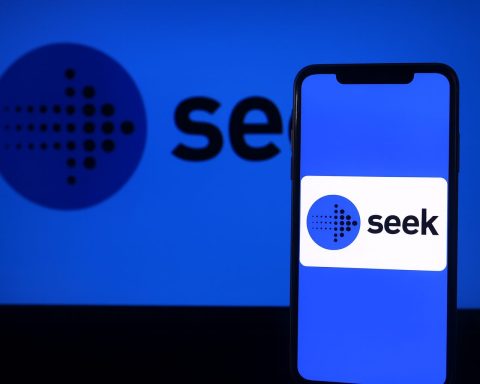- Massive Rally on Takeover Rumors: Brighthouse Financial stock spiked nearly 27% on October 31, 2025, surging into the mid-$50s after reports of advanced talks to take the insurer private in a ~$4 billion deal at ~$70/share [1] [2]. The shares had spent most of the week hovering in the mid-$40s [3] before the buyout buzz sent them to their highest levels of the year (around $56 by Friday’s close [4]).
- Upcoming Earnings in Focus: Brighthouse is slated to report Q3 2025 earnings on November 6. Wall Street expects a strong rebound – EPS ~$5.09 (up ~27.6% YoY) on $2.25 billion revenue (up ~3.5%) [5]. However, the company has a mixed track record: it missed estimates in 3 of the last 4 quarters [6], including a big Q2 miss, so investors are eager to see if Brighthouse can beat the optimistic forecasts this time.
- Recent Performance Volatility: Last quarter highlighted Brighthouse’s earnings swings. Q2 2025 revenue plunged 39% year-over-year to $871 million, far below expectations [7] [8]. Yet cost controls helped net income improve to $60 million (a 6.9% profit margin, up from almost breakeven 0.6% a year prior) [9]. The stock itself saw a 29% drop from Feb to Aug 2025 amid market volatility [10], before takeover speculation reversed its course. Even before this week’s jump, BHF shares had modestly outperformed peers in 2025 – up ~12% by mid-year vs ~5% for the insurance sector [11] – and with the latest surge, the stock’s year-to-date gain now far outpaces industry averages.
- Buyout Buzz and Activist Pressure: Brighthouse has been the center of sale rumors for months. This week’s catalyst was a Financial Times report that Aquarian Holdings (backed by Abu Dhabi’s Mubadala fund) is in advanced talks to acquire BHF, possibly announcing a deal as soon as this weekend [12]. Aquarian is reportedly considering up to $70 per share, though no agreement is final [13]. Earlier in October, Sixth Street was also said to be in the mix, offering around $55/share [14]. The drumbeat grew louder after renowned investor David Einhorn’s Greenlight Capital (4.9% owner) publicly urged Brighthouse’s board in late September to “accept” a $70 takeover bid, calling the company a “perennial disappointment for investors” since its 2017 spin-off [15]. Einhorn noted Brighthouse stock was languishing at ~32% of book value despite massive buybacks (over 52% of shares repurchased since 2017) [16]. His stance: it’s time to unlock value via a sale – or else Greenlight threatened to push for board changes if the company doesn’t act in shareholders’ best interests [17]. This activist pressure, combined with private equity interest (TPG and others also explored bids [18] [19]), has put Brighthouse in the M&A spotlight.
- Financial Health & Debt: Fundamentally, Brighthouse is a major U.S. annuity and life insurer (spun off from MetLife in 2017) with a sizeable in-force business and growing new product lines. Its flagship Shield annuities have seen “meaningful” growth even as older life insurance blocks run off [20]. Trailing 12-month revenue is about $6.2 billion with $664 million net income, a respectable ~11% net margin [21]. The company carries several billion in long-term debt but maintains investment-grade ratings (e.g. “BBB+” on senior notes) [22], and credit analysts cite a “very strong” capital position and robust risk management for market swings [23] [24]. Still, earnings have been volatile – Brighthouse’s adjusted EPS in Q2 was only $3.43 vs an expected $4.48 [25], and over the past three years its profits are down sharply [26]. This reflects the challenges of managing market-sensitive annuity liabilities in a turbulent interest rate environment. On the positive side, rising interest rates can bolster future income (by allowing higher yields on investments backing policies), and Brighthouse’s hedging program has helped shield it from worst-case scenarios [27]. The firm’s aggressive share repurchases and cost cuts have also shored up its book value per share – which makes the current low valuation stand out even more.
Short-Term and Long-Term Outlook
Deal or No Deal: In the short term, Brighthouse’s fate may hinge on the takeover negotiations. If Aquarian finalizes a buyout near $70/share, the stock could quickly gravitate toward that price (roughly 25% above where it traded post-rumor) and shareholders would lock in a substantial one-time gain [28]. Market watchers note that private equity interest in life insurers is driven by the opportunity to earn higher returns on insurers’ investment portfolios [29]. Aquarian’s rumored ~$4 billion offer (at $70) underscores that strategic buyers see more value in Brighthouse than the public market does – a sentiment echoed by activists and some analysts. However, there’s no guarantee a deal is consummated: talks could still fall through or drag on if financing hurdles arise [30].
If no deal emerges, what’s next for Brighthouse? The stock would likely give back some of its takeover premium – it was trading in the mid-$40s before the latest headlines. But longer-term, Brighthouse could continue as an independent turnaround story. The company has been exploring “strategic alternatives” for much of 2025 [31], so other bidders or a breakup of the company remain possible outcomes if the Aquarian route fails. Greenlight’s involvement means management is under pressure to boost shareholder value one way or another. In absence of M&A, that means executing on its core business: growing sales of annuities and life insurance, improving investment yields, and maintaining capital returns to shareholders (Brighthouse has not paid a dividend but focuses on buybacks). The upcoming earnings call (Nov 7) will be critical for management to outline its plan forward, especially if they intend to remain independent. Investors will listen for any updates on strategic talks or any hints that Brighthouse might entertain a higher bid or alternate deal.
Analyst & Investor Sentiment: Despite recent turbulence, some experts remain bullish on Brighthouse’s prospects. For example, analysts at Raymond James reiterated a “Strong Buy” rating and a $72 price target in light of the takeover speculation [32]. That target essentially values Brighthouse near the mooted buyout price, suggesting Wall Street sees fair value in the upper $60s even on fundamentals. The case for optimism: Brighthouse is deeply undervalued by typical metrics – trading around 0.3× book value and barely 2–3× forward earnings [33] – which is a fraction of what more stable peers command. “Brighthouse Financial stands out as an undervalued annuity and life insurance provider,” one analysis noted, pointing to its low valuation and potential for a rebound if performance stabilizes [34]. In other words, if Brighthouse can deliver more consistent earnings (or if interest rates stabilize favorably), the stock might have significant upside on its own, even without a takeover.
That said, risks temper the long-term outlook. As a smaller insurer focused heavily on market-linked annuities, Brighthouse’s earnings and capital can whipsaw with market conditions. Its big Q2 miss – with revenue 60% below estimates [35] – was a stark reminder of this volatility. The life insurance industry is also competitive and heavily regulated, which can cap growth. Brighthouse’s decision not to pay dividends and instead plow cash into buybacks is a double-edged sword: great when the stock is cheap, but it offers less buffer if earnings stumble. Some investors have grown impatient (e.g. Kawa Capital dumped its entire stake in October, citing concern over “too much volatility” after watching BHF slide nearly 30% earlier in the year [36]).
Bottom Line: Brighthouse Financial is at a crossroads. In the near term, all eyes are on the potential Aquarian deal and the Q3 earnings release. A confirmed buyout around $70 would mean a quick windfall for stockholders [37]. Absent that, the stock’s trajectory will depend on whether management can instill confidence through improved results and perhaps renewed strategic moves. Longer-term, if Brighthouse remains public, it faces a pivotal task: proving to the market that it can translate its strong capital position and growing product lines into steady profits – and thereby close the valuation gap to its peers. For now, the expert consensus skews positive on Brighthouse’s value: the company’s undervalued metrics and takeover interest suggest significant upside potential, but only if the execution (or a buyer’s checkbook) finally validates the promise. Investors should brace for continued swings – the next few weeks could be especially eventful – but many agree that Brighthouse’s story is “too cheap to ignore” at current levels, whether on its own merits or as a buyout target [38] [39].
Sources
- Financial Times/Investing.com report on Aquarian’s takeover talks [40] [41]
- Reuters – Aquarian’s ~$4B bid (~$70/share) and deal status [42] [43]
- Investing.com – Oct 31, 2025: BHF shares +25% on buyout rumor [44]
- Investing.com historical prices – BHF stock around $45–47 in late Oct, jumping to ~$56 (+26.9%) on Oct 31 [45]
- Zacks/Yahoo Finance – Q3 2025 earnings consensus (EPS $5.09, +27.6% YoY; Rev $2.25B, +3.5% YoY) [46] and recent earnings surprise history [47]
- Yahoo Finance – Q2 2025 results: revenue $871M (–39% YoY), net income $60M (margin 6.9% vs 0.6% YoY) [48]
- Motley Fool/Nasdaq – One-year performance (+20.8% YoY as of Oct) and business overview [49] [50]; stock volatility (–29% Feb–Aug 2025) [51]
- Reuters – June 2025: Brighthouse exploring sale; YTD +12% vs +5% insurance index [52]
- Greenlight Capital letter (Investing.com) – Einhorn urging sale at $70; “time has come to sell… perennial disappointment” quote [53], noting 52% of shares repurchased yet stock at 32% of book [54]; Raymond James Strong Buy with $72 target [55]
- AM Best analysis – Brighthouse’s capital “very strong,” stable outlook, hedges mitigate market risk [56] [57]
- Seeking Alpha via Stocktwits – Brighthouse “trading at just 0.33× book… undervalued insurer poised for rebound” [58] (analyst commentary on valuation).
References
1. www.investing.com, 2. www.reuters.com, 3. www.investing.com, 4. www.investing.com, 5. finviz.com, 6. finviz.com, 7. finance.yahoo.com, 8. www.investing.com, 9. finance.yahoo.com, 10. www.nasdaq.com, 11. www.reuters.com, 12. www.investing.com, 13. www.investing.com, 14. www.reuters.com, 15. www.investing.com, 16. www.investing.com, 17. www.investing.com, 18. www.reuters.com, 19. www.reuters.com, 20. news.ambest.com, 21. www.nasdaq.com, 22. news.ambest.com, 23. news.ambest.com, 24. news.ambest.com, 25. www.investing.com, 26. www.nasdaq.com, 27. news.ambest.com, 28. www.investing.com, 29. www.reuters.com, 30. www.reuters.com, 31. www.investing.com, 32. www.investing.com, 33. www.investing.com, 34. seekingalpha.com, 35. www.investing.com, 36. www.nasdaq.com, 37. www.investing.com, 38. www.investing.com, 39. www.investing.com, 40. www.investing.com, 41. www.investing.com, 42. www.reuters.com, 43. www.reuters.com, 44. www.investing.com, 45. www.investing.com, 46. finviz.com, 47. finviz.com, 48. finance.yahoo.com, 49. www.nasdaq.com, 50. www.nasdaq.com, 51. www.nasdaq.com, 52. www.reuters.com, 53. www.investing.com, 54. www.investing.com, 55. www.investing.com, 56. news.ambest.com, 57. news.ambest.com, 58. seekingalpha.com







